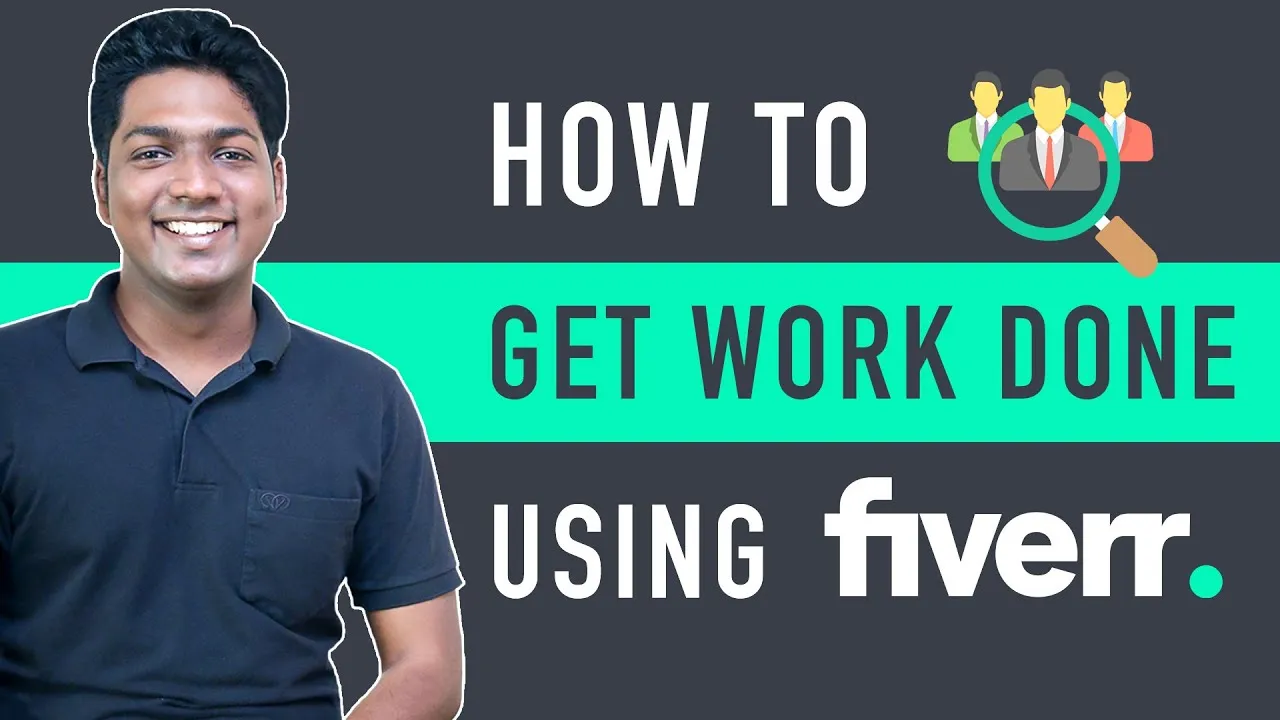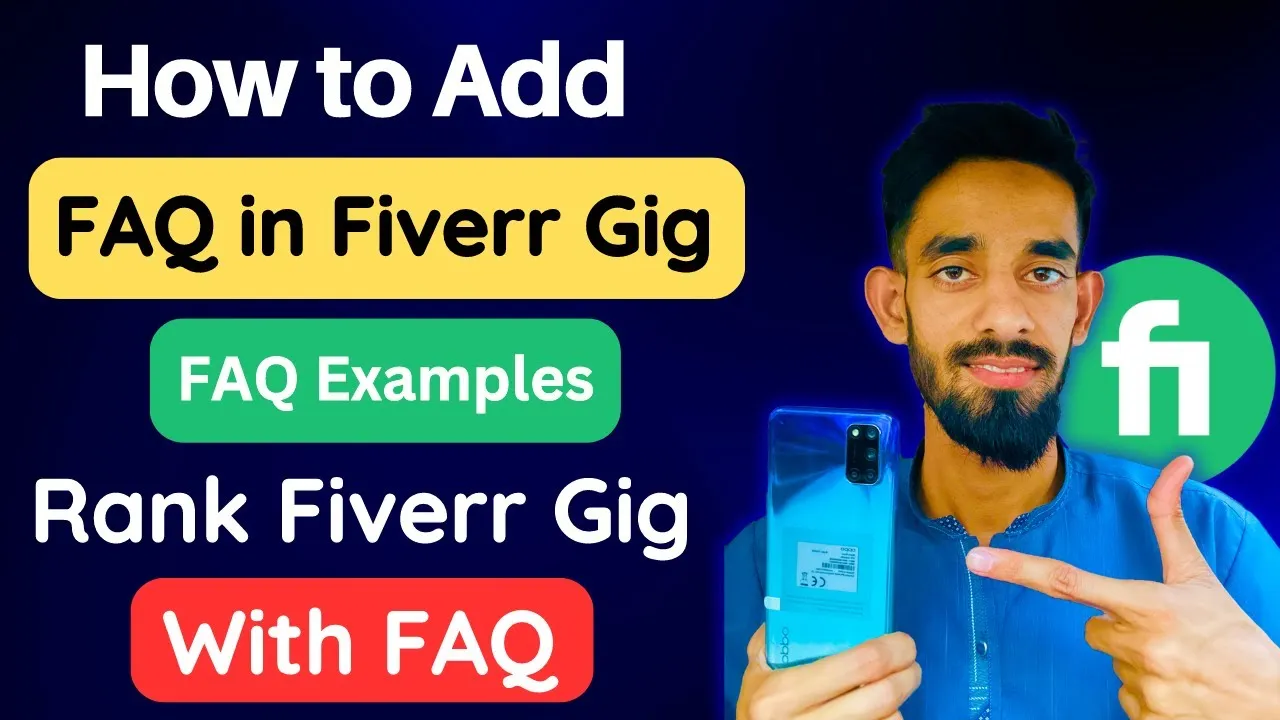Have you ever found yourself scrolling through Fiverr, wondering if you really need to accept every gig that comes your way? If you're a freelancer, the temptation to grab every opportunity can be enticing, but is it the best strategy? In this post, we'll explore what it really means to accept gigs on Fiverr, so you can make informed decisions that suit your skills and lifestyle.
Understanding Fiverr's Gig System

To grasp the nuances of working on Fiverr, it's essential to understand its unique gig system. Fiverr operates on a marketplace model, bringing together freelancers (sellers) and clients (buyers) who seek various services. Each service offered is referred to as a "gig". Here's a closer look at how this system works:
- Service Variety: Fiverr covers a broad spectrum of services — from graphic design and writing to programming and voiceovers. Sellers can create multiple gigs based on their skills.
- Pricing Models: Gigs can range from $5 (the original concept of the platform) to thousands, depending on complexity and seller experience. You can offer different pricing tiers—basic, standard, and premium—to attract a wider audience.
- Gigs and Packages: Selling gigs on Fiverr isn’t just about one-off services. Sellers can create packages where they bundle services together, often resulting in better value for clients and higher earnings for themselves.
- Reviews and Ratings: Every gig comes with a review system. Positive reviews can boost your visibility and credibility, while negative reviews can set you back, so it’s vital to maintain quality.
- Buyer Requests: Besides having gigs, you can also browse buyer requests. These are posted by clients looking for specific services, giving you the chance to pitch your skills directly.
In summary, understanding Fiverr's gig system is crucial for navigating the platform effectively. While it may be tempting to take every gig offered, assessing each opportunity against your skills and workload is invaluable for long-term success.
Also Read This: How I Get My Money Back from Fiverr
The Pros and Cons of Accepting Every Gig

When you're starting out on Fiverr, it might be tempting to accept every gig that comes your way. After all, more gigs mean more money, right? However, like everything in life, there are pros and cons to this approach. Let’s break it down:
Pros:
- Increased Revenue: Accepting more gigs can lead to higher earnings, especially when you’re still building your portfolio.
- Experience: Each gig allows you to gain practical experience, which is invaluable when honing your skills.
- Client Variety: Working with different clients can expose you to diverse projects, broadening your horizons and improving your adaptability.
- Building a Reputation: The more work you do, the more reviews you can accumulate, which helps improve your visibility on the platform.
Cons:
- Quality Over Quantity: Juggling too many gigs may lead to a drop in the quality of your work, which can harm your reputation.
- Burnout: Continuous work without breaks can lead to exhaustion and diminished creativity.
- Time Management Challenges: Managing multiple clients can be tricky, especially if deadlines overlap.
- Lack of Specialization: Taking every gig might prevent you from honing in on your niche, which is important for long-term success.
In summary, while accepting every gig on Fiverr can help you generate quick income and gain experience, it’s essential to consider the long-term impacts on quality, burnout, and your overall career trajectory.
Also Read This: Exploring Alternatives: Websites Like Fiverr for Freelancers and Clients
Setting Your Own Boundaries

Once you’ve decided on your approach to gigs, the next step is figuring out how to set boundaries that work for you. Let’s clarify why boundaries are essential and how to establish them.
First off, setting boundaries helps you maintain a healthy work-life balance. As a freelancer, it can be easy to lose track of time, but by defining your limits, you can protect your personal time and mental well-being.
Here are some tips on how to set effective boundaries:
- Define Your Availability: Clearly communicate your working hours to clients. This way, they know when to expect your responses.
- Know Your Limits: Be honest with yourself about how much work you can handle. Don’t overload your schedule; prioritize quality over quantity.
- Set Payment Expectations: Make sure to discuss payment terms upfront to avoid late payment issues. Consider asking for a deposit for larger projects.
- Limit Revisions: Specify how many revisions you’ll do for a gig to prevent endless back-and-forth that could eat into your time.
- Choose Your Projects Wisely: If a gig doesn’t align with your skills or interests, it’s okay to say no. This will help you focus on projects that truly excite you.
In essence, establishing clear boundaries isn’t just about protecting your time; it’s also about setting standards for the type of work you’ll accept. By doing this, you allow yourself the space to grow, develop your skills, and work more effectively with your clients.
Also Read This: Freelancing with HTML and CSS: Getting Started
Evaluating Gigs: When to Say Yes and When to Say No
As a freelancer on Fiverr, you might feel tempted to accept every gig that comes your way. But here's the thing: not every opportunity is worth your time. Evaluating gigs carefully can save you from burnout and ensure that you’re investing your energy in projects that align with your skills and goals.
So, when should you say yes, and when should you hit that 'decline' button? Here are a few criteria to consider:
- Skill Match: Does the gig require skills that you possess? If you have to learn something from scratch, it might not be worth it, especially if deadlines are tight.
- Compensation: Is the pay worth your time? Calculate the hourly wage based on the project scope. If it feels like you’re working for pennies, it might be a red flag.
- Client Profile: What does the client's profile look like? Have they reviewed others positively? Good clients lead to smoother projects.
- Project Scope: Is the project clear and well-defined? Ambiguous gigs can lead to endless revisions and frustration.
- Personal Interest: Are you genuinely interested in the project? Passion can spark creativity and yield better results.
In short, take a moment to weigh these factors before jumping in. It’s all about quality over quantity!
Also Read This: Best Fiverr Sellers for Legal Consulting in 2024
Strategies for Managing Your Workload
Finding the right balance in your freelance gig life on Fiverr can be a bit of a juggling act. But don’t worry! With the right strategies, you can manage your workload like a pro. Here are some actionable tips to keep your stress levels in check:
- Set Clear Boundaries: Always have a clear idea of when you’re available to work. Inform clients of your schedule upfront to manage their expectations.
- Prioritize Tasks: Make a list of all your gigs and organize them by deadlines and complexity. Tackle higher-priority projects first to avoid last-minute panic.
- Use Time Management Tools: Consider using tools like Trello, Asana, or even a simple calendar to keep track of your tasks and deadlines.
- Batch Similar Tasks: Group similar gigs together to improve efficiency. For example, if you’re doing graphic design tasks, do them in one go instead of spreading them throughout the day.
- Don't Hesitate to Decline: If you’re already stretched thin, it’s okay to say no to new gigs. Quality work takes time!
- Take Breaks: Schedule short breaks throughout your work to recharge and maintain focus. Even five minutes away from the screen can make a big difference!
By implementing these strategies, you can find Harmony in your workload and create a more productive and enjoyable freelance experience on Fiverr.
Do You Have to Take Every Gig on Fiverr?
As a freelancer on Fiverr, you may find yourself wondering if you need to accept every gig that comes your way. While the platform provides numerous opportunities, it's essential to consider the impact of accepting all projects on your workload, quality of work, and overall satisfaction.
Here are some factors to consider when deciding whether to take on a gig on Fiverr:
- Time Management: Do you have enough time to complete the gig without compromising your deadlines for other work? Managing your time effectively is crucial.
- Skill Set: Does the gig align with your skills and expertise? Taking on projects outside your area of competence can lead to unsatisfactory results.
- Client Ratings: Assess the client’s rating and previous reviews. A low-rated buyer may indicate potential challenges in communication or payment.
- Potential Earnings: Consider if the gig's payment justifies the amount of time and effort required. Sometimes, a project might not be worth your time, especially if it pays less than your usual rate.
- Overall Fitness: Assess if the gig fits your personal brand and portfolio. Consistency is key to establishing your image on the platform.
It's important to know that you are in control of your Fiverr business. You can select gigs that align with your goals, interests, and capacity.
| Pros of Accepting Gigs | Cons of Accepting Gigs |
|---|---|
| Increased income opportunities | Potential burnout from overcommitment |
| Building a diverse portfolio | Lower quality output if rushed |
| Expanding your network | Risk of negative reviews if expectations are not met |
In conclusion, the key to thriving on Fiverr lies in finding a balance between seizing opportunities and maintaining quality in your work. By selectively choosing gigs that resonate with your skills and values, you can create a fulfilling freelance career.



